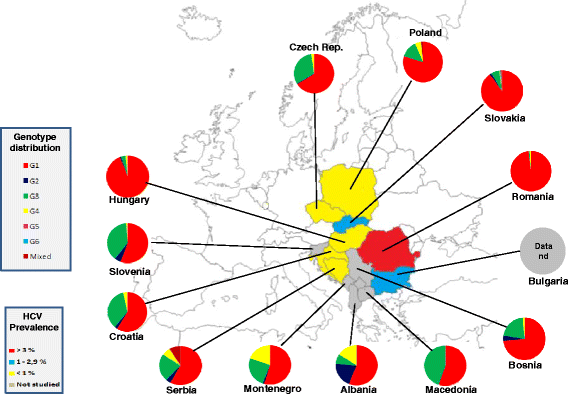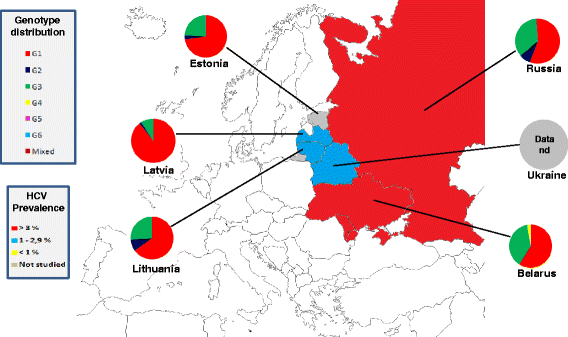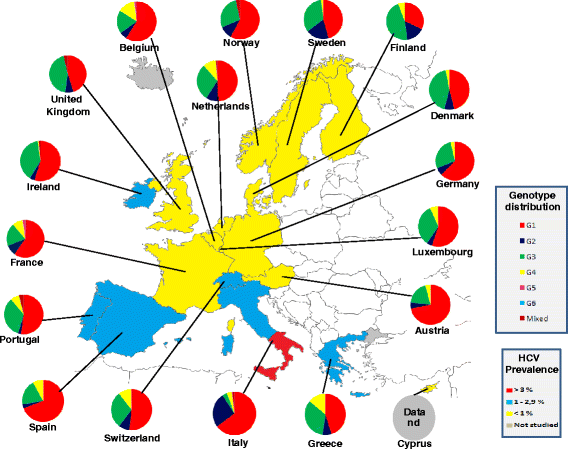Hepatitis C virus (HCV) genotypes distribution: an epidemiological up-date in Europe
- PMID: 27752280
- PMCID: PMC5062817
- DOI: 10.1186/s13027-016-0099-0
Hepatitis C virus (HCV) genotypes distribution: an epidemiological up-date in Europe
Abstract
Hepatitis C virus (HCV) infection is a major public health burden in Europe, causing an increasing level of liver-related morbidity and mortality, characterized by several regional variations in the genotypes distribution. A comprehensive review of the literature from 2000 to 2015 was used to gather country-specific data on prevalence and genotype distribution of HCV infection in 33 European countries (about 80 % of the European population), grouped in three geographical areas (Western, Eastern and Central Europe), as defined by the Global Burden of Diseases project (GBD). The estimated prevalence of HCV in Europe is 1.7 % showing a decrease than previously reported (- 0.6 %) and accounting over 13 million of estimated cases. The lowest prevalence (0.9 %) is reported from Western Europe (except for some rural areas of Southern Italy and Greece) and the highest (3.1 %) from Central Europe, especially Romania and Russia. The average HCV viraemic rate is 72.4 %, with a population of almost 10 million of HCV RNA positive patients. Genotype distribution does not show high variability among the three macro-areas studied, ranging between 70.0 % (Central Europe), 68.1 % (Eastern Europe) and 55.1 % (Western Europe) for genotype 1, 29.0 % (Western Europe), 26.6 % (Eastern Europe) and 21.0 % (Central Europe) for genotype 3. Genotype 2 seems, instead, to have a major prevalence in the Western Europe (8.9 %), if compared to Eastern (4.3 %) or Central (3.2 %), whereas genotype 4 is present especially in Central and Western area (4.9 % and 5.8 %, respectively). Despite the eradication of transmission by blood products, HCV infection continues to be one of the leading blood-borne infections in Europe. The aim of this review is, therefore, to provide an update on the epidemiology of HCV infection across Europe, and to foster the discussion about eventual potential strategies to eradicate it.
Keywords: Epidemiology; HCV genotype; HCV infections; HCV prevalence; Hepatitis C virus; Viraemia.
Figures
References
Publication types
LinkOut - more resources
Full Text Sources
Other Literature Sources




